
Improper labelling or packaging causes over 80% of freight losses, damages and misdirects. As a shipper, you’re responsible for providing adequate labelling, sufficient protective packaging, and accurate descriptions of your goods on the shipping documentation.
To avoid lost or damaged freight, ask yourself these questions before you ship:
• Does each handling unit in my shipment have labels with the full shipper and consignee address and contact information?
• Does each handing unit have ONLY one barcode sticker with a tracking number (Freight Bill)?
• Does the freight have adequate exterior and interior packaging?
• If on a skid, is it wrapped and secured to prevent shifting?
Freight lacking barcodes will cause transit and delivery delays.
2. Apply ONLY one barcode sticker with a tracking number (Freight Bill) in sequence to every handling unit to prevent scanning errors and allow piece-level tracking.
3. When shipping multiple pieces together as individual handling units, ensure the freight is securely strapped or plastic wrapped together.
4. Ensure your shipment has adequate interior and exterior protective packaging. 5. If you are shipping non-stackable items, place a DO NOT STACK cone on top of your handling unit.
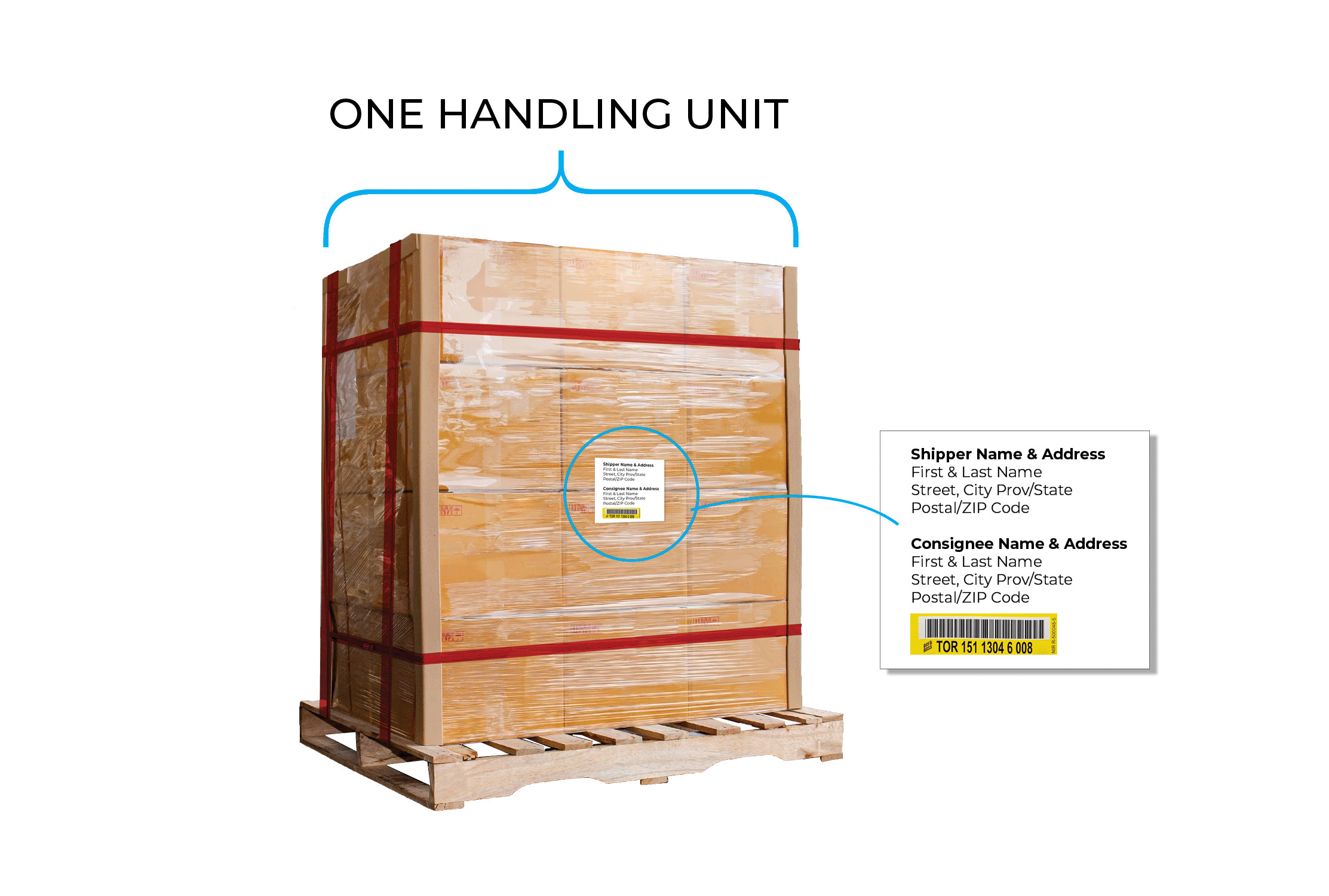
Follow these labelling and packaging tips to ensure your shipment is delivered on time, intact, and damage-free.
Shipper & Consignee Info
Ensure every handling unit is clearly labelled with the complete shipper and consignee address, and phone numbers. We use technology to scan the barcode labels applied to your freight. In the event the barcode cannot be read, the details you provide on the shipper and consignee label will help us identify your freight and minimize delays.
Barcode Labels
Ensure every handling unit is labelled with ONLY one barcode sticker with a tracking number (Freight Bill) in sequence to prevent scanning errors and allow piece-level tracking. We require the barcode tracking label because it enables our technology to direct your freight to the right location. Freight lacking barcodes will cause transit and delivery delays.
What Is a Handling Unit?
Proper packaging is critical for having your freight delivered on time, intact, and damage free. Select the exterior and interior packaging materials that best suit your commodity.
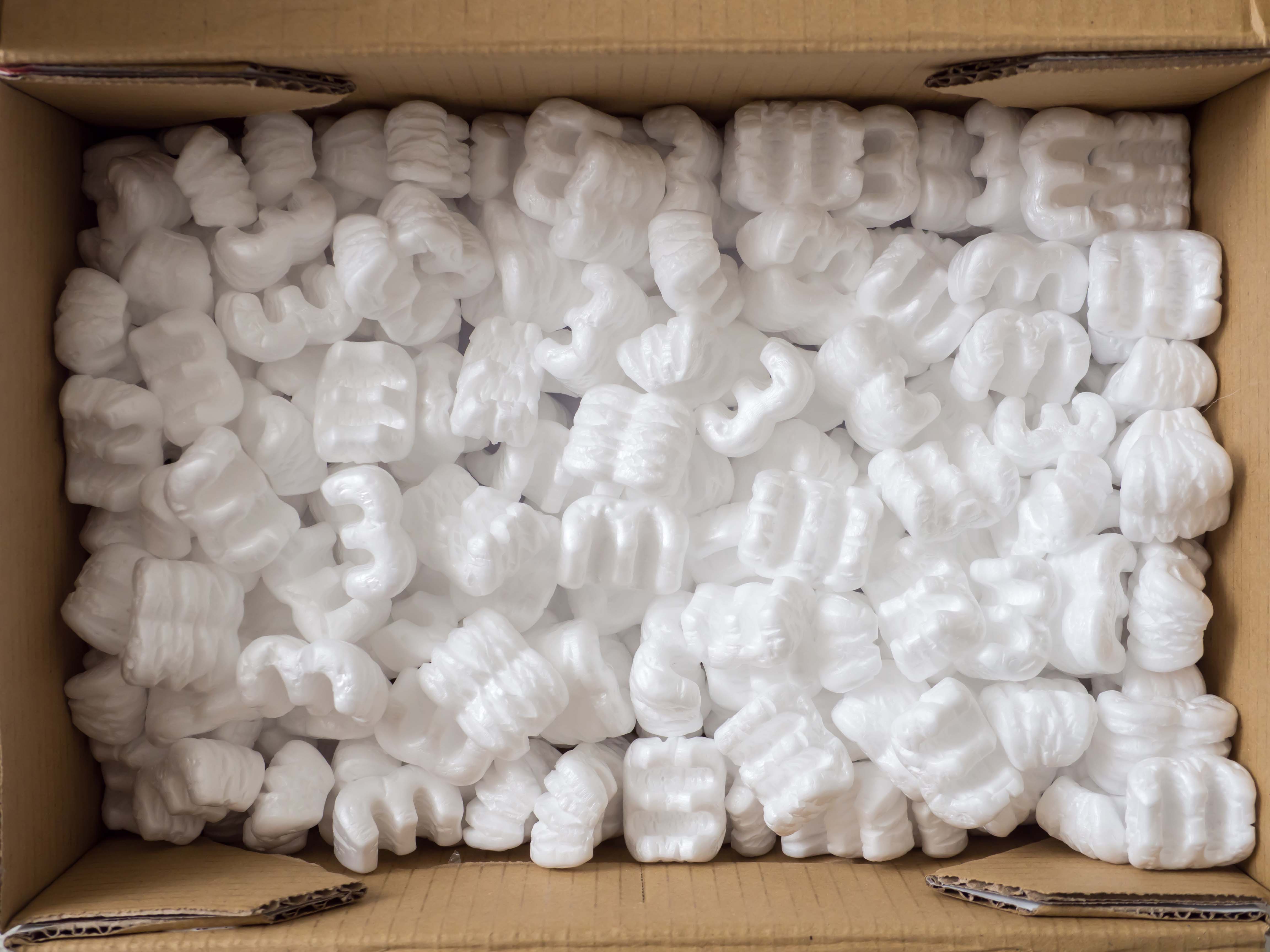
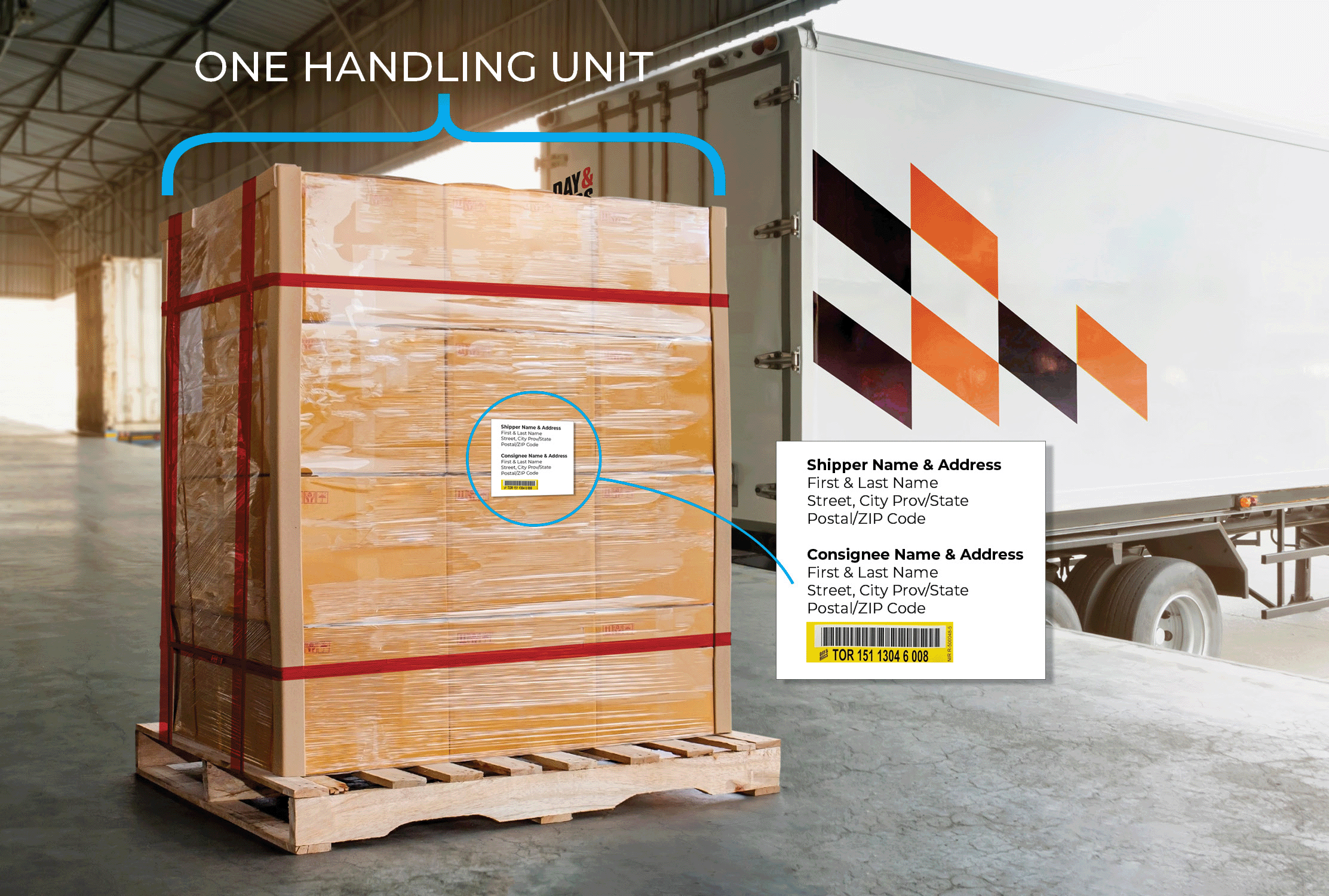
Strap, Wrap & Secure Your Freight
When shipping multiple pieces together as individual handling units, ensure the freight is securely strapped or plastic wrapped together and the shipper/consignee address labels and barcode tracking numbers are placed on top of the wrapping (on the outside) so it can be read effectively.
Regardless of the material, size, or type of drums you’re using to ship your goods, following a few simple steps will help you prevent damages:
- Choose the drum that meets the required Transport Canada or UN/US DOT rating or FDA approval. For example, reconditioned drums are not approved to ship food, beverages, and edible products.
- Secure the drums with metal straps as close as possible to the centre of the pallet to ensure there is no overhang. The strapping should be as close to the drum sides as possible to avoid shifting during transportation.
- If your drum is filled with liquid, take extra care not to exceed the pallet weight capacity. For example, fifty-five gallons of water weighs 459 pounds, so depending on the drum material, you’re looking at around 500 lbs. It could be heavier or lighter, depending on the product density.
- Add a corrugated sheet between the drum and pallet to reduce wear and prevent punctures caused.
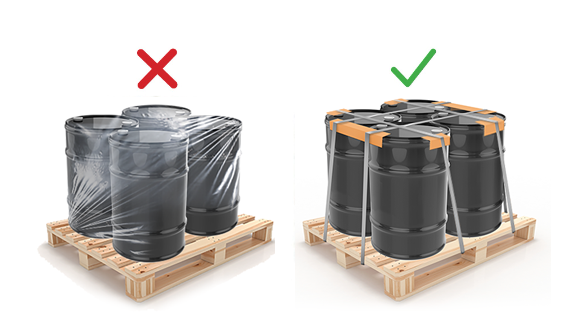

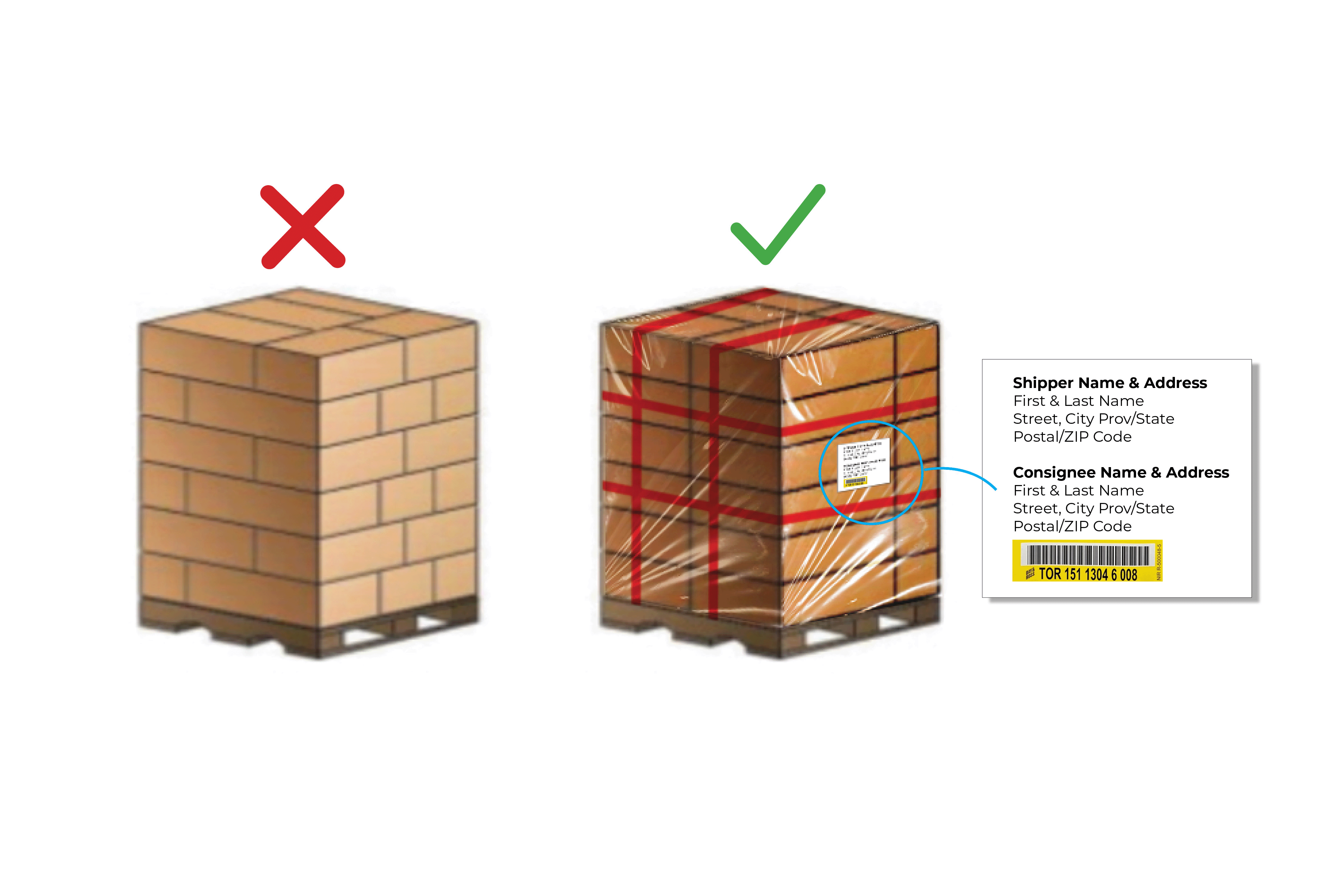
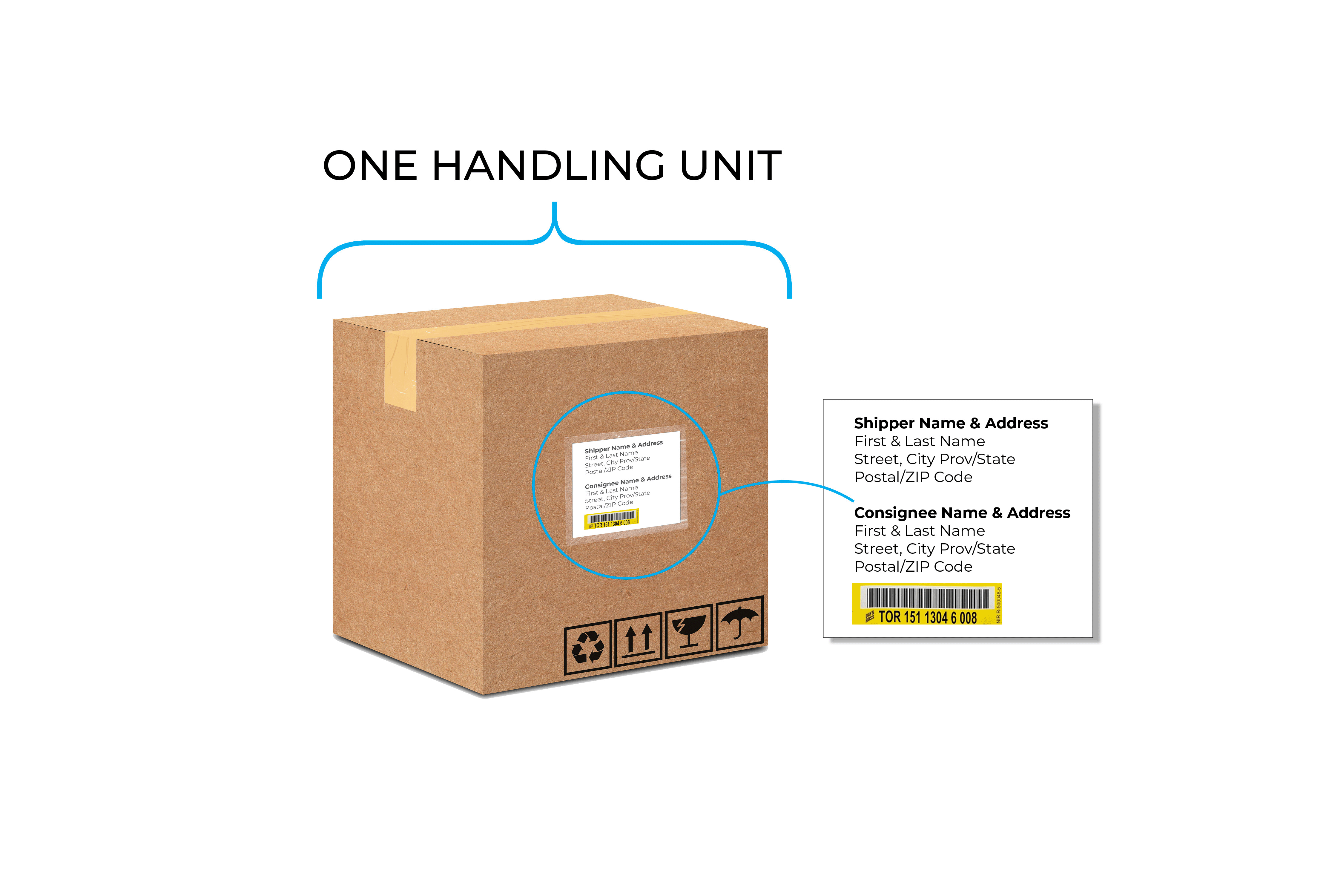
What Is a Bill of Lading?
The Bill of Lading (BOL) is a legal document. When you complete the Day & Ross BOL, you agree to the Terms & Conditions stating that “the goods have been properly packaged and prepared to withstand those risks of damage necessarily incidental to transportation.”
Share our tips with your team on how to:
• apply the new barcode stickers correctly
• select the right packaging materials
• stretch wrap and secure your freight on a skid
• stack cartons on palletized freight
• avoid shock and vibration during transportation
Ready to request a quote or ship with us?
Connect with an expert to learn more about our services.